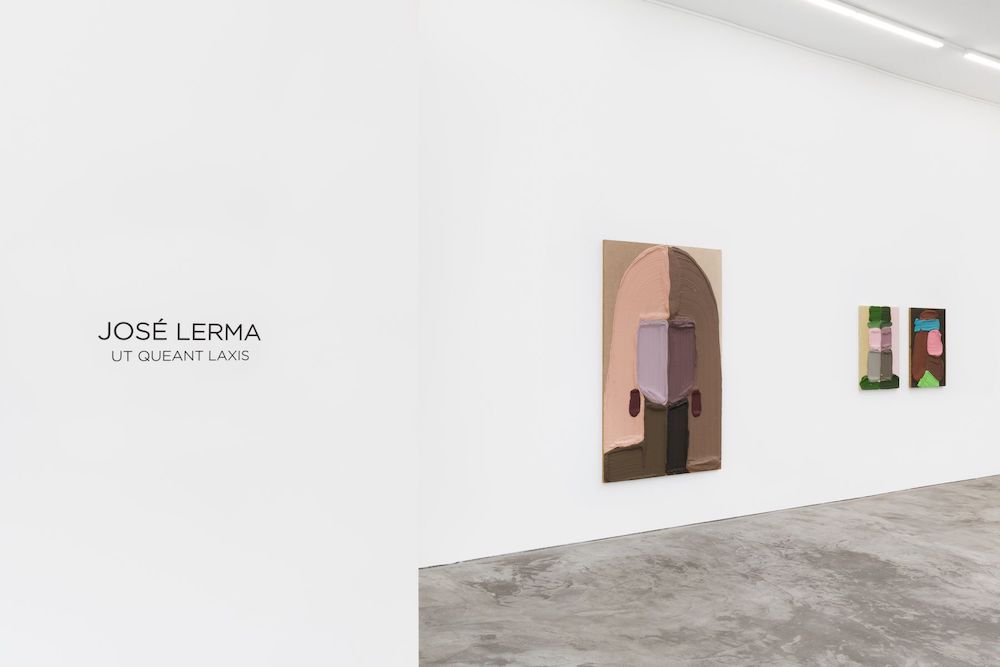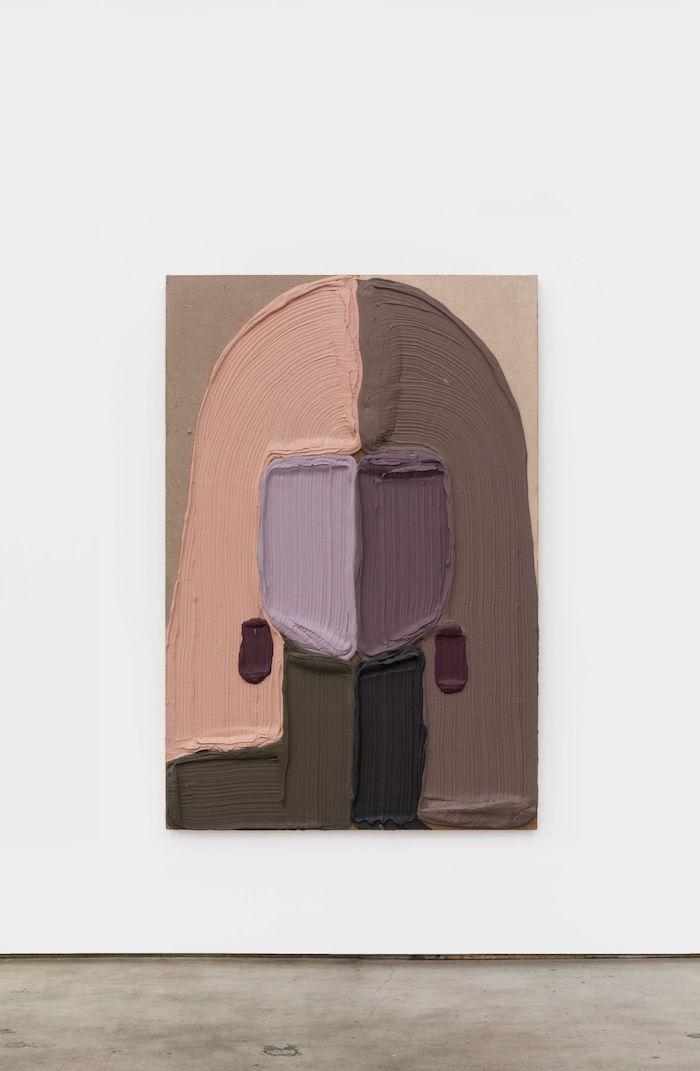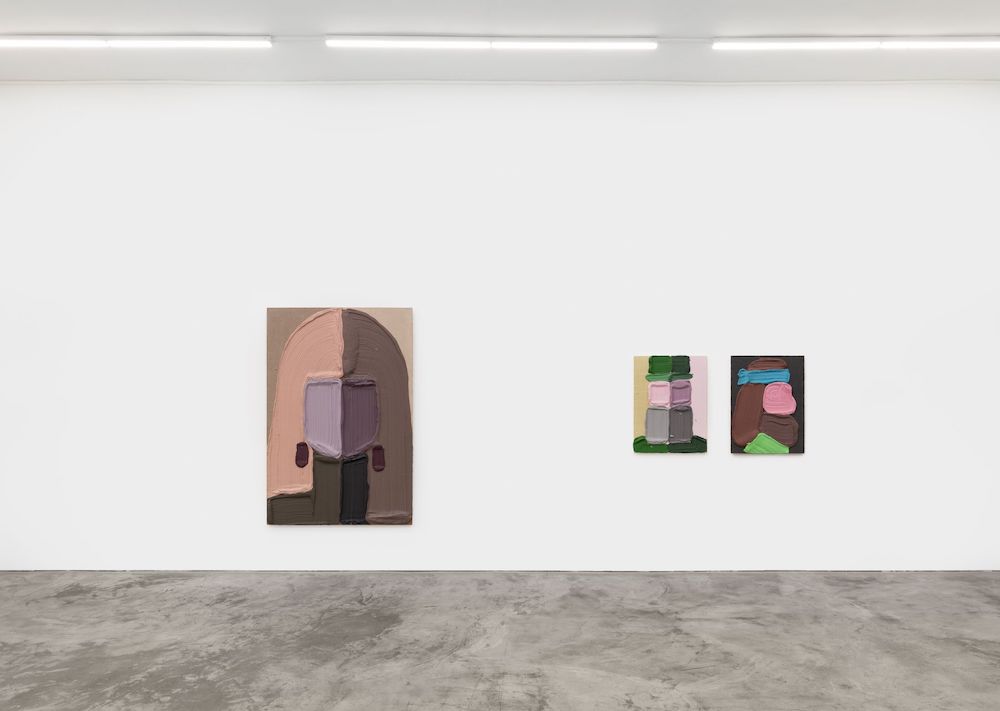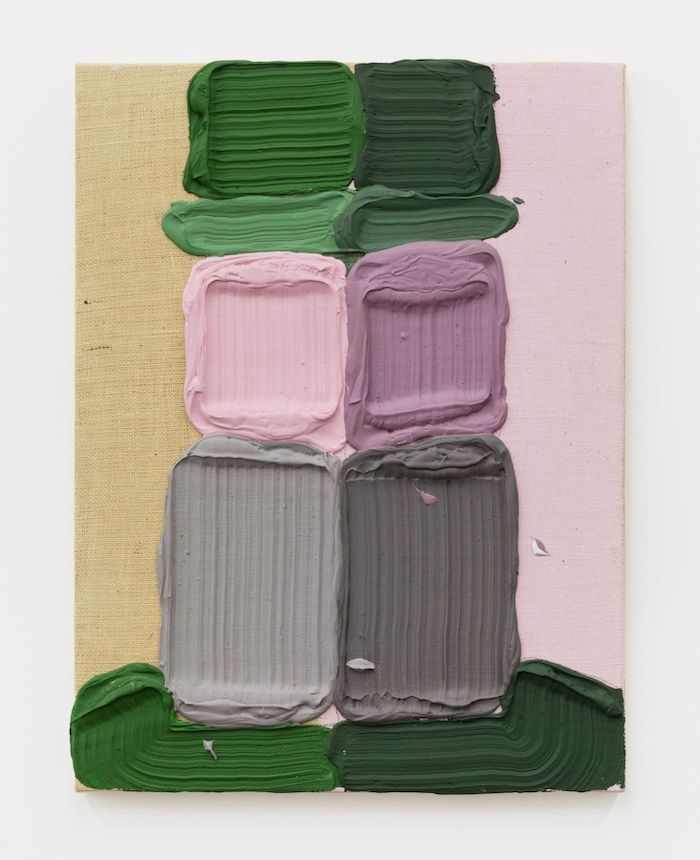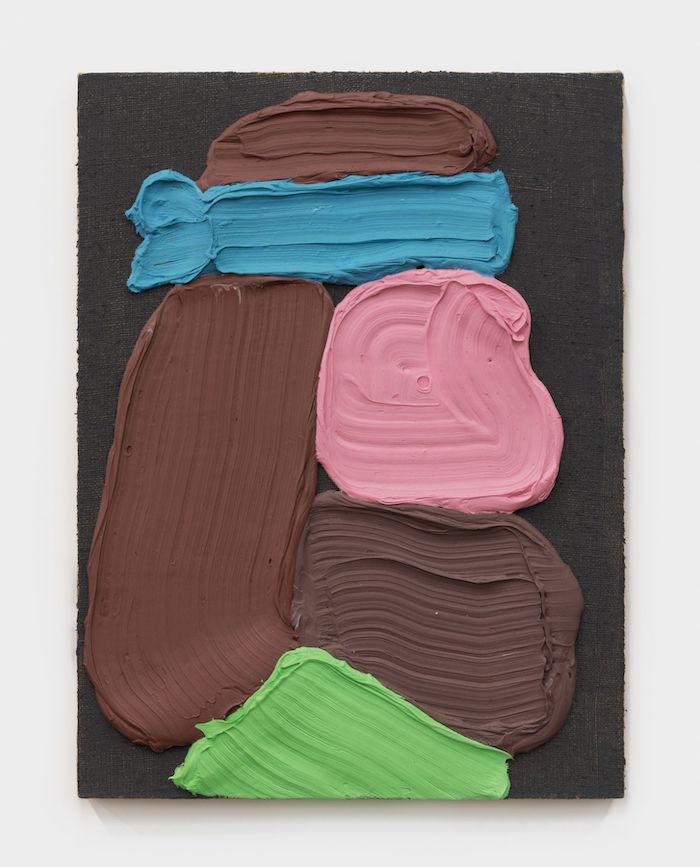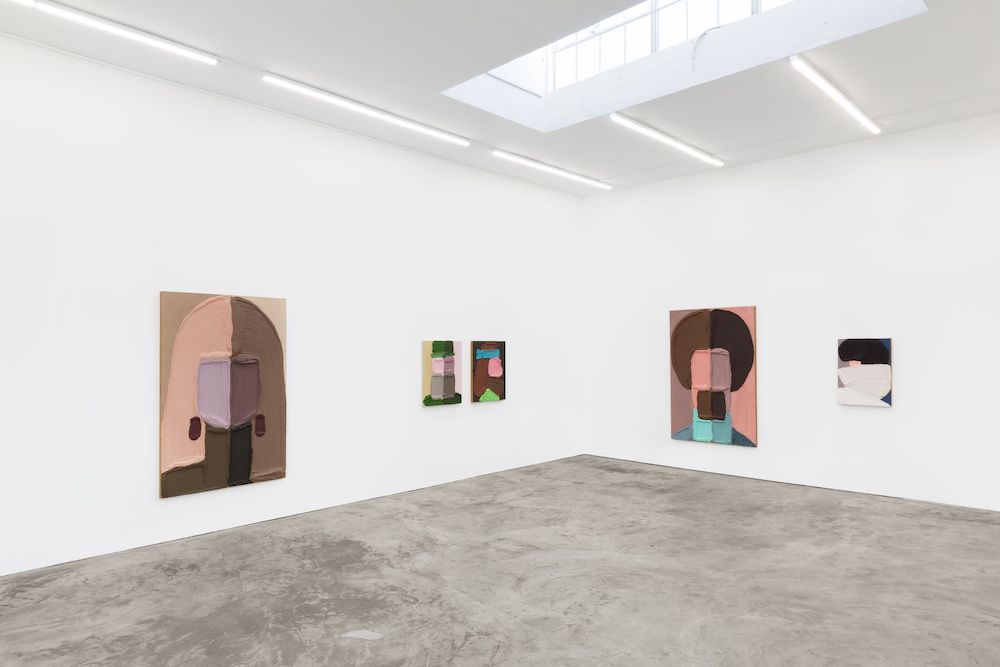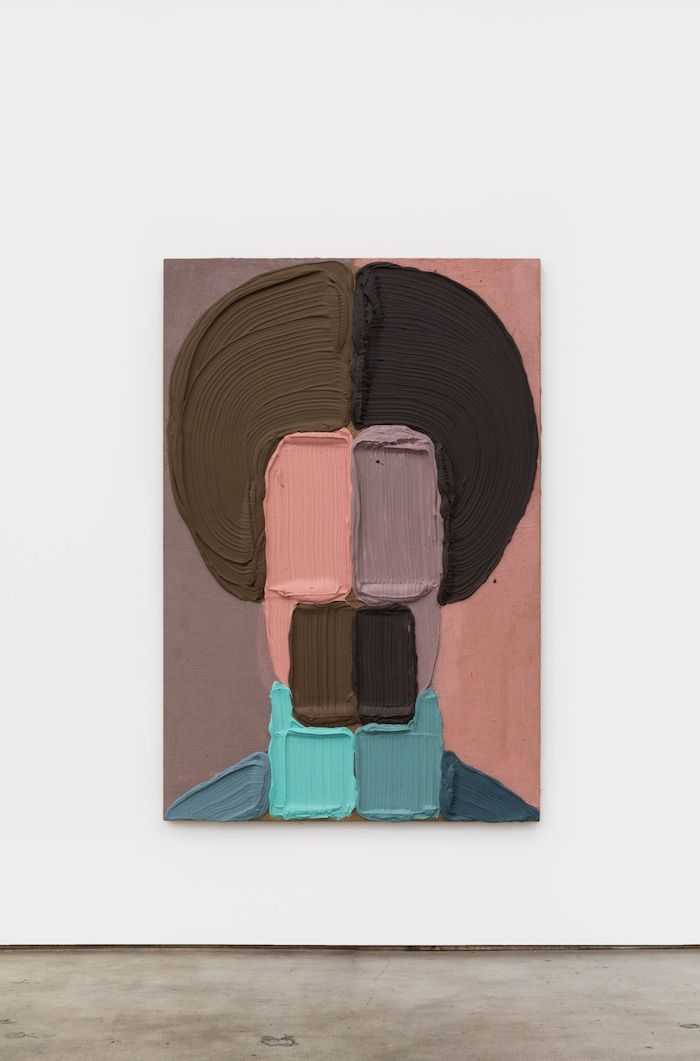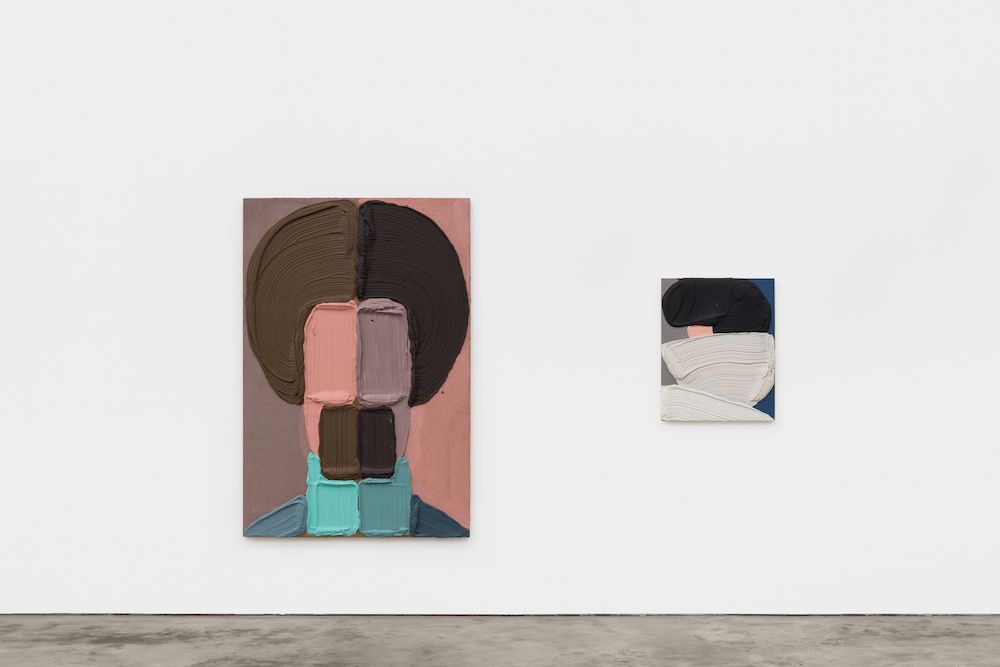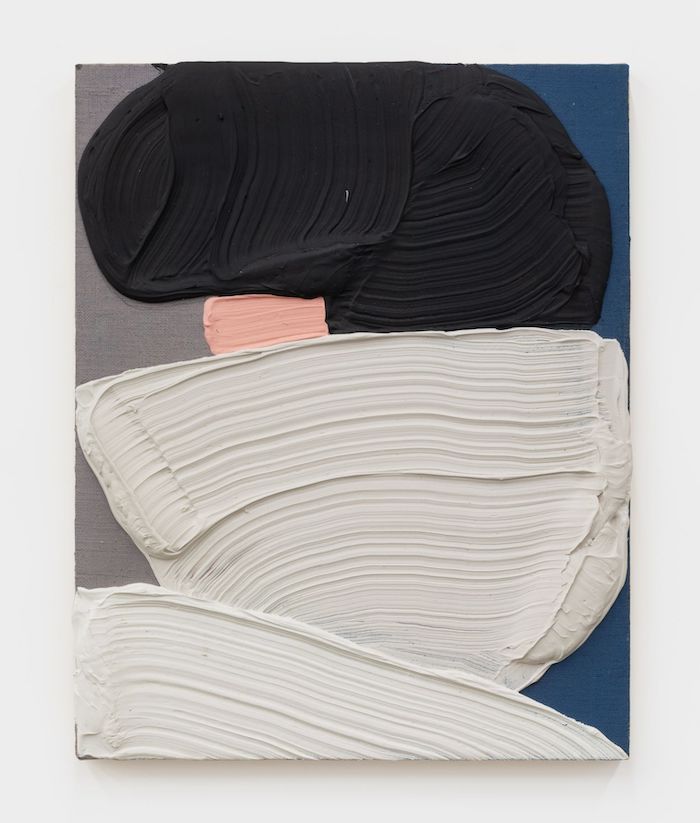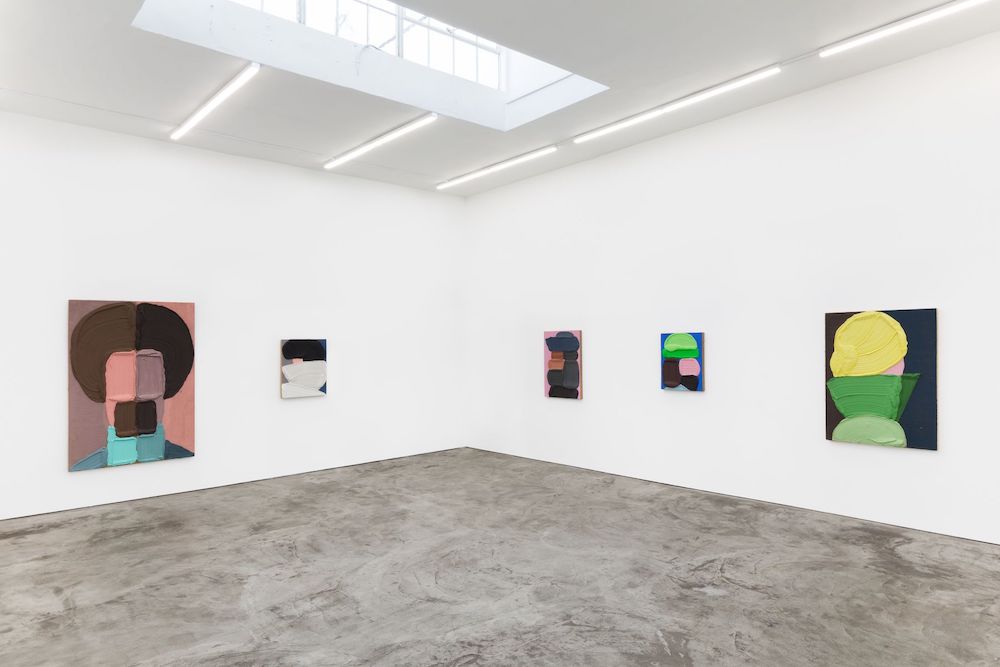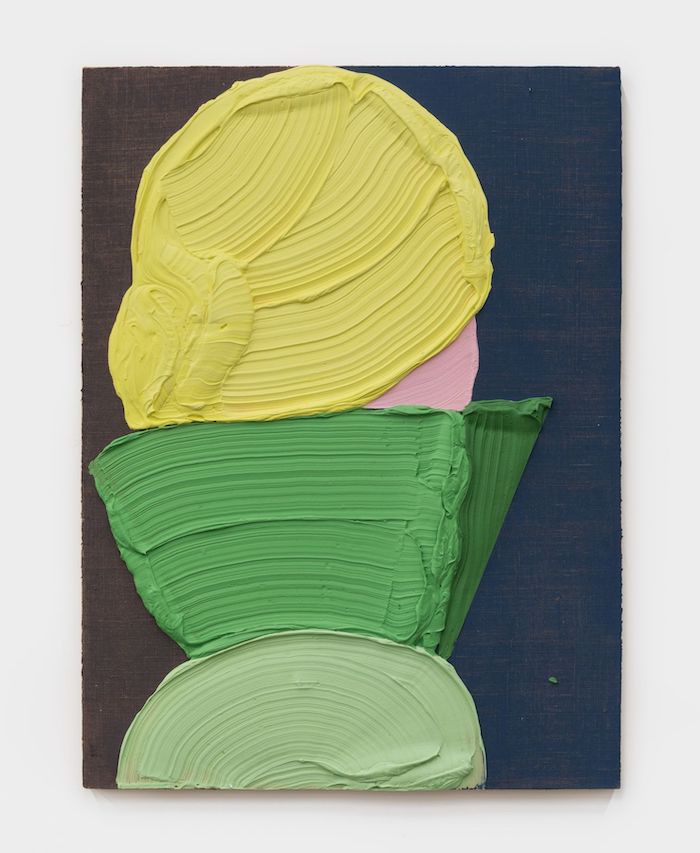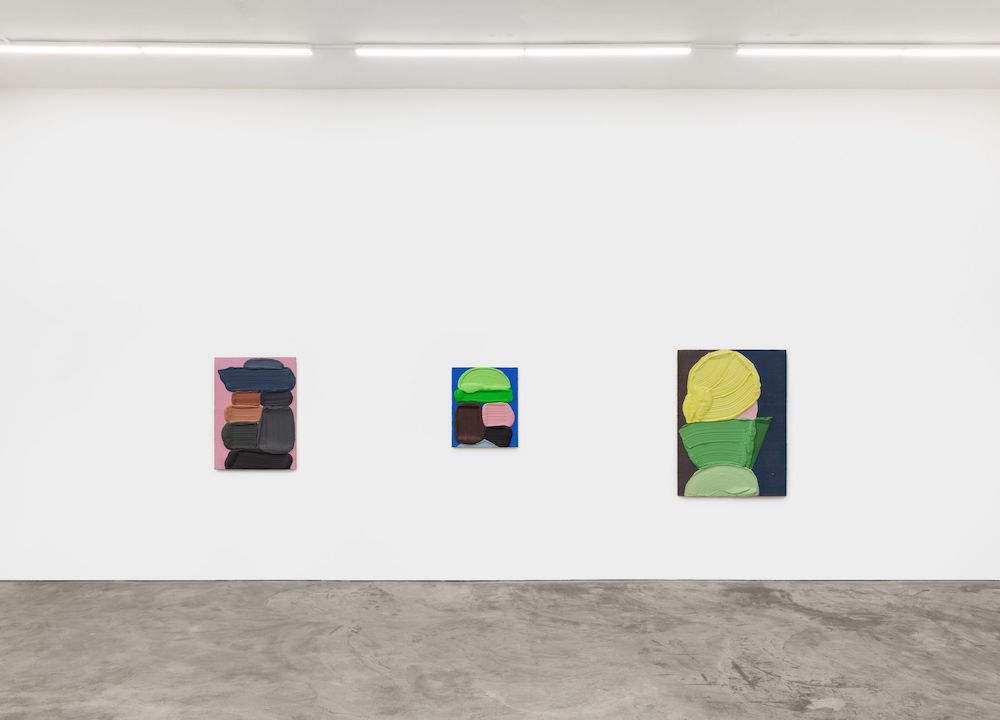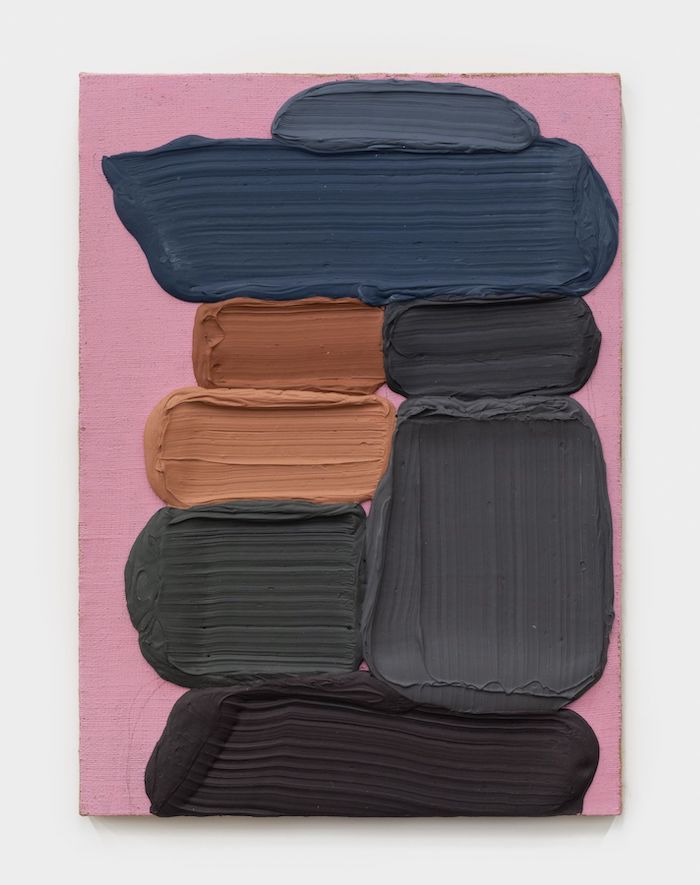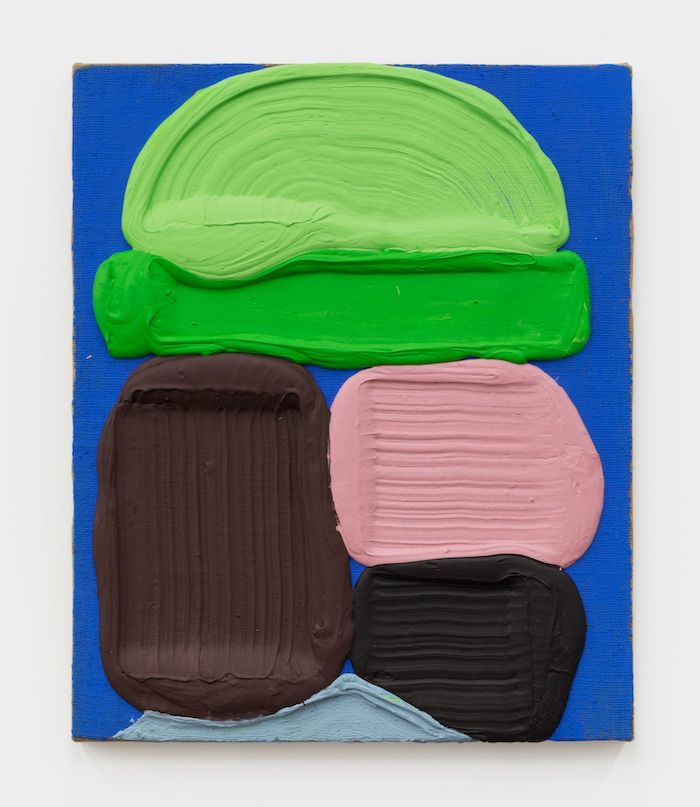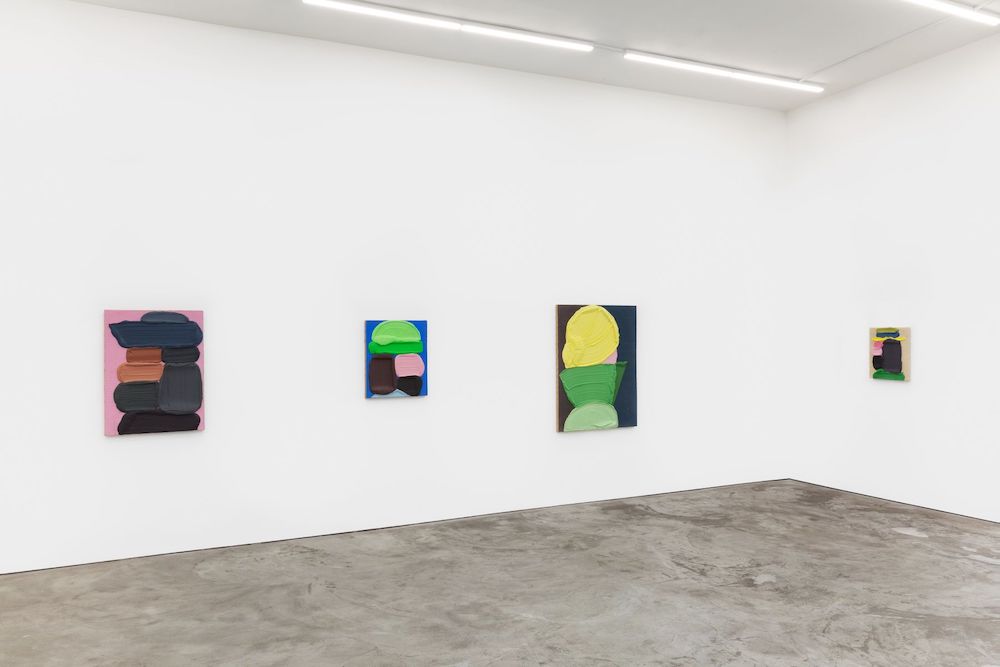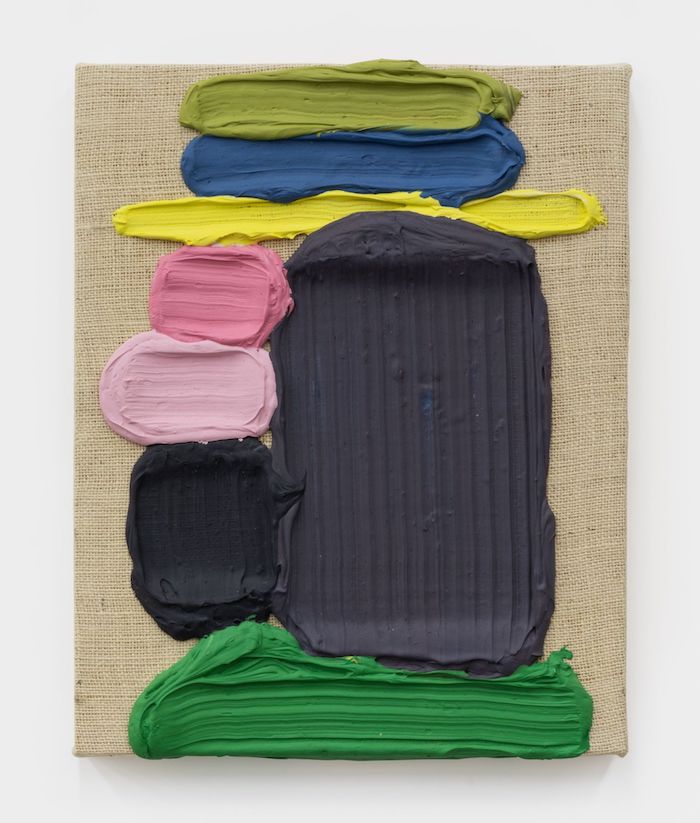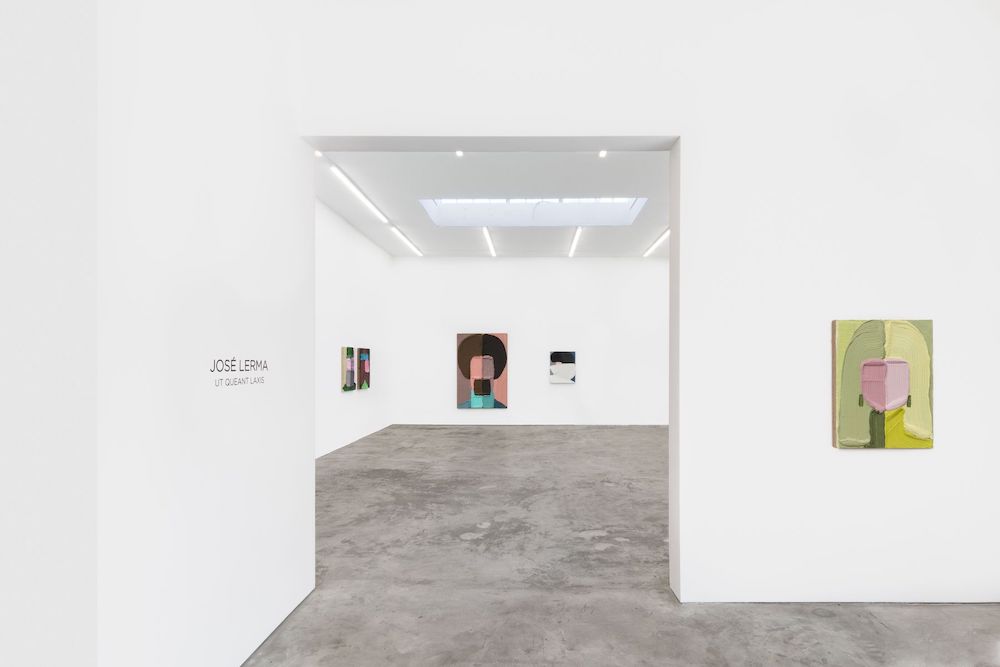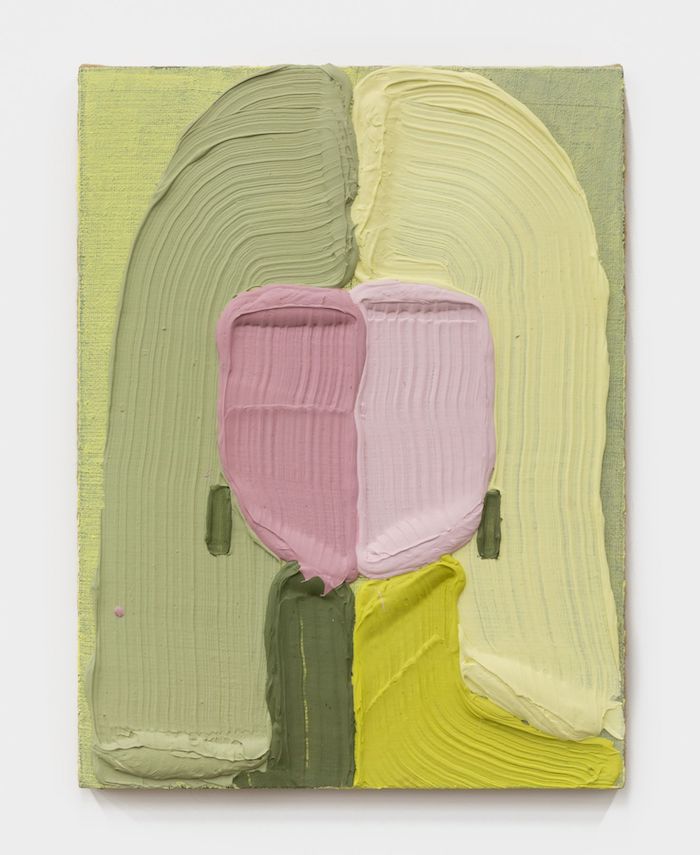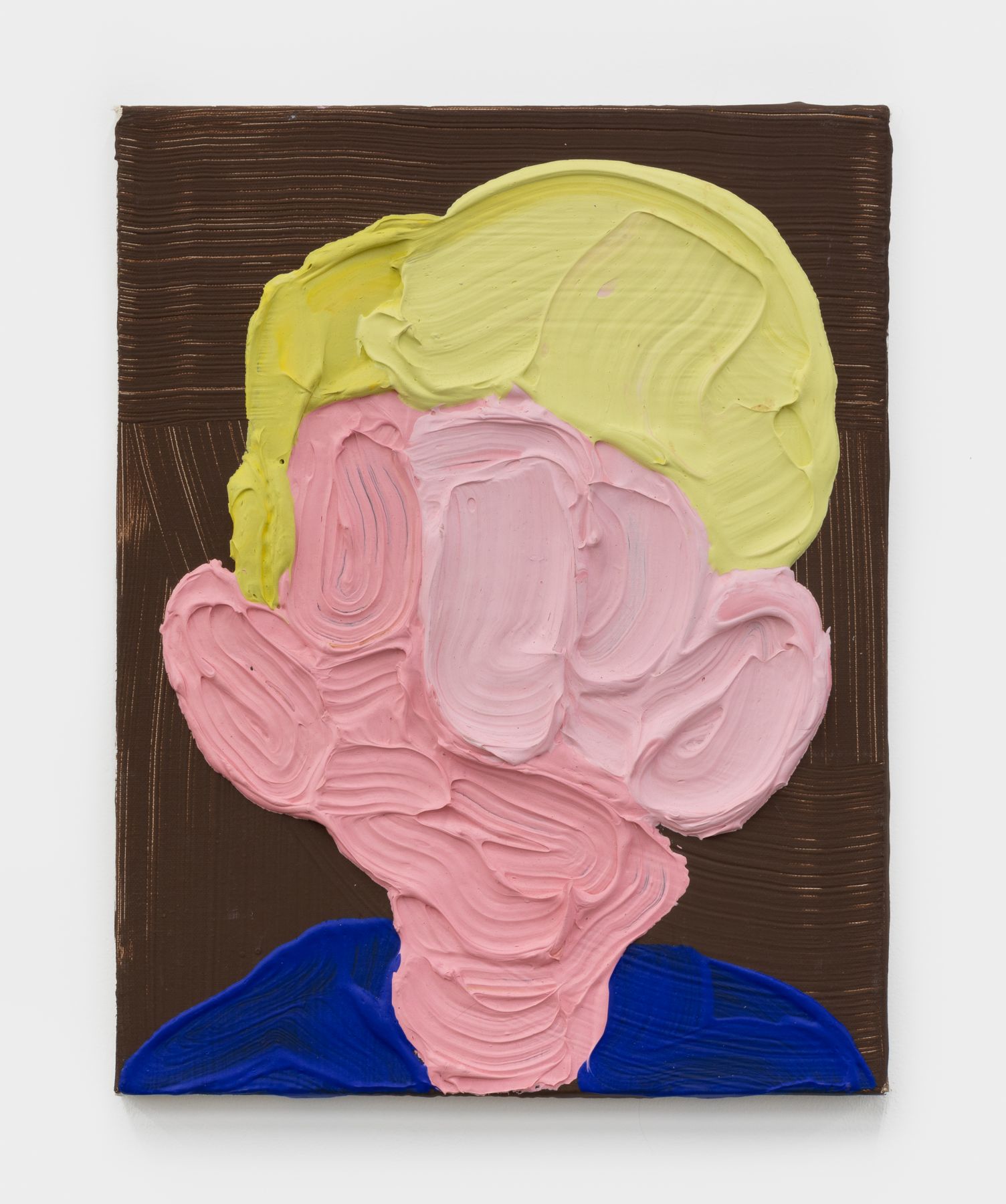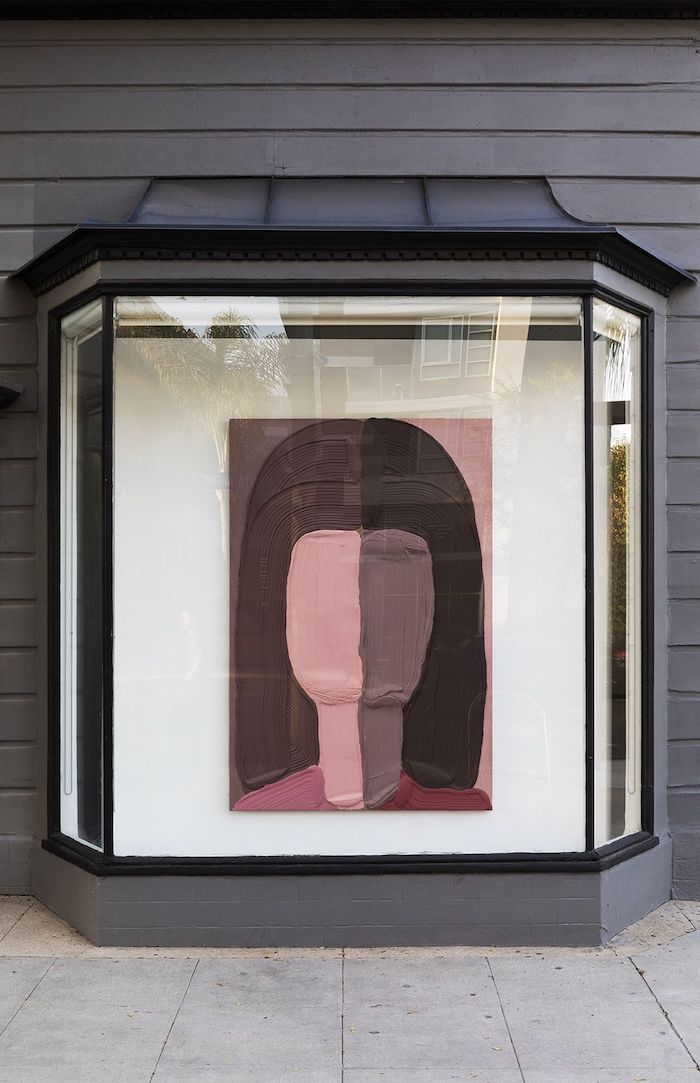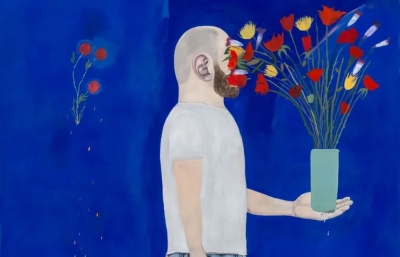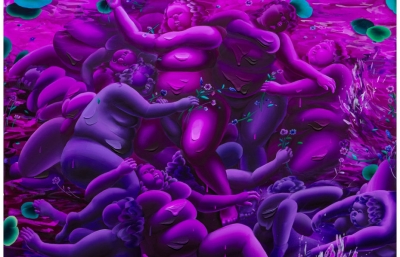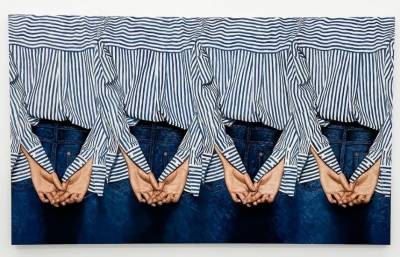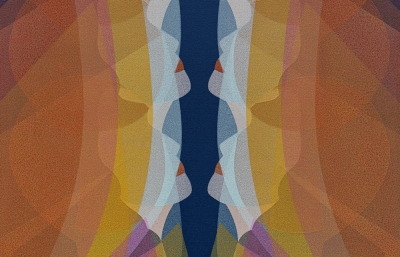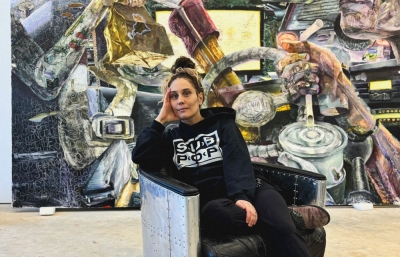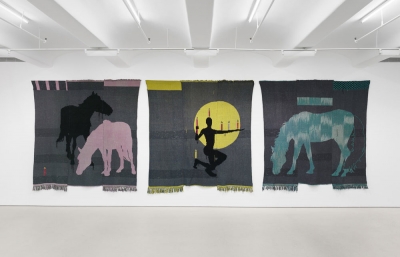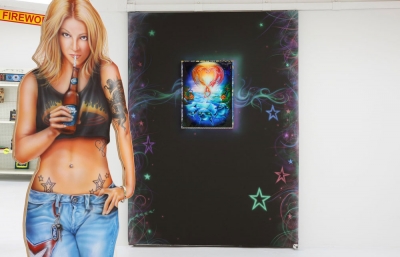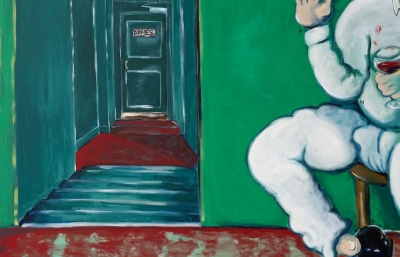Nino Mier gallery in LA is currently running the final week of Jose Lerma's debut solo show Ut Queant Laxis. Borrowing the title from the Latin hymn in honor of John the Baptist, the suite of works comprising this extraordinary presentation introduces new takes on the portraiture form developed by the Seville-born artist.
As fans of figuration we've been enjoying watching Lerma using the archetypal depiction of a person to experiment with the most fundamental elements of painting and employing paint's materiality beyond its original design. It's this particular quality of his process that inspired the title of a show, repurposing the name of a monophonic chant often used for teaching singing because of its way of using successive notes of the scale. Puerto Rico-based artist saw it fitting to entitle his debut and introduce his practice with the same name, matching the stoic atmosphere of his work with the timeless vibe of Latin language.
The idiom "less is more" certainly applies to Lerma's work, but only when talking about the formative elements of the painting. The form, the color palette, the composition, the paint application and manipulation, everything is reduced to its most basic structure. The shape of a face and/or the body is depicted as a slob of paint, the composition is simplified to a few elements, the color palette includes almost equal amounts of tones, and the painting technique is reduced to equal amounts of precisely calculated gestures. Yet, as if to compensate for the purposeful simplicity of the process, the artist is using an abundance of the paint pushing the image far beyond, or above, the flatness of the surface. Additionally, through persistent use of burlap's woven texture as the support, the artist emphasizes the organic feel of the work while keeping the elements within the rudimentary sphere. Both painting and shaping his sitters, Lerma's combination of voluminous lumps of paint laid on thick threaded-surface creates a scale illusion as all the elements suggest small-scale work while reality claims otherwise.
With such understanding of his work and impressed by the scale in which these pieces are actually constructed, we were happy to be able to chat with Lerma and learn a bit more about his practice, his tools and materials, his background, influences, and references he is using in his work.
Sasha Bogojev: How or why did your subjects get reduced to slabs of paint?
Jose Lerma: I enjoy the contradiction of having an excess of materials and an economy of brush marks. It is challenging to create a moving portrait with only seven or ten strokes. For that reason, there is a lot of preparatory work that has to go into these paintings.
What does the process or preparation look like?
I start with a sketch where I work out all the colors and compositional elements in advance. A lot of details are edited out at this stage. What emerges from this rigorous process has to look straightforward like a small oil study might feel, with its surface build-up and unevenness, but larger than life. Part of the desire behind these works is to bring the intimacy of a study and present it on a public scale.
That goal is certainly achieved in my opinion. And what sorts of tools and materials do you use to achieve that?
I mix the paint in buckets and apply it with commercial brooms and modified brushes. It is thick, heavy, and begins to form a skin in less than thirty minutes. Once I start to paint, it has to be done fast and in one shot. It's not an endlessly malleable substance like oil or versatile like acrylics. You have to plan and make every brushstroke count because while the quantity of material is excessive, the style demands that it looks effortless.
How difficult was it to develop your practice to be able to paint in such a manner?
As a student, out of financial necessity, I began adding various commercial thickeners to paint. I used medium, gels, marble dust, and hardware store materials. These also gave the paint a rubbery matte finish similar to play-doh, which most viewers find disarming. I still use the same formulas, but now I use high-quality pigments. I have been using this mixture for two decades with no significant issues, and even when it has limitations, it has a very distinctive finish which gives my work its feel. At times, the paint is so sculptural that it decides the subjects and style, telling what to paint and how to paint it.
Do you see your practice as painting or sculpting?
I mostly think like a painter. It is the basis of my work. Even working within an expanded language like installation or sculpture, I tend to compose pictorially. I started as a painter who didn't believe in painting, so I did a lot of Post studio work and painting. I don't feel that way anymore. 
Was there a certain source of inspiration behind this particular body of work and what are some of your major influences?
This recent series was influenced by a visit I made to a museum more than ten years ago. I was looking at a very busy Jean Léon Gérôme painting and noticed the sketch-like handling of the tiny insignificant background people. I thought that abbreviated style would make exciting large paintings. So I began to paint larger-scaled works in the manner of small pieces. I also enjoyed the social implications of painting in the style of peripheral characters and thought that this idea had legs.
My painting influences are Martin Kippenberger, Sean Landers, Jonathan Lasker, Julian Schnabel, Bram Bogart, Giorgio Morandi, David Reed, Laura Owens, Alice Neel, Robert Colescott, Diego Velasquez, Piero Della Francesca, and many others. Two of my teachers, TL Solien and Michelle Grabner were also immensely influential on my practice.
What type of reference images are you working from or how do you choose your subjects?
I used paintings from the European Wing of the Art Institute of Chicago for many years as a reference. Before that, I used images of relatively unknown historical figures, mainly when traveling and working on site. Recently, I moved back to Puerto Rico with my wife. I decided then to paint random people from the neighborhood or just from my head. It has been very liberating to move away from historical references. Now the images just come to me, and I can live with that.
https://www.miergallery.com/exhibitions/jose-lerma



